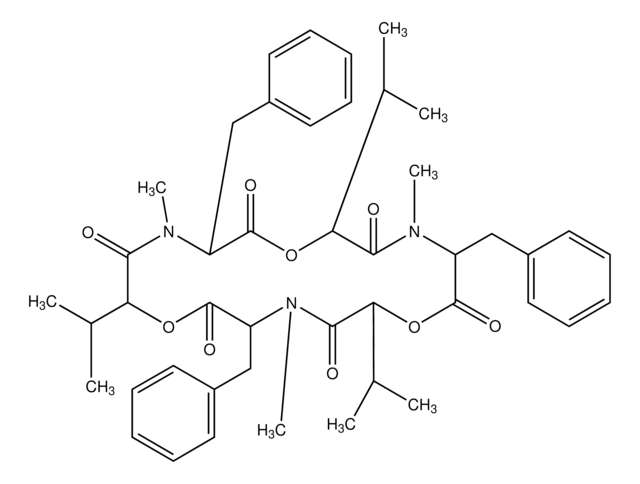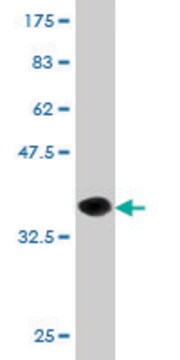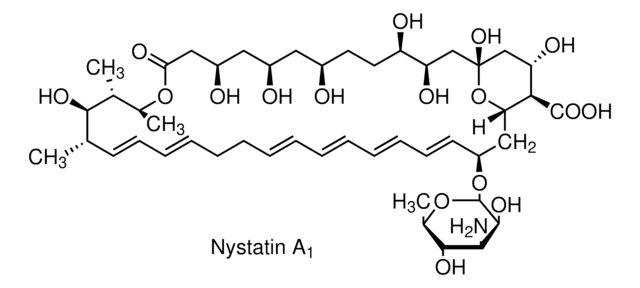E5286
Enniatin B1
from Gnomonia errabunda, ≥95% (HPLC)
Synonym(s):
2-(N-Methyl-L-isoleucine) Enniatin B, 3-Butan-2-yl-4,10,16-trimethyl-6,9,12,15,18-penta(propan-2-yl)-1,7,13-trioxa-4,10,16-triazacyclooctadecane-2,5,8,11,14,17-hexone
About This Item
Recommended Products
biological source
Gnomonia errabunda
Quality Level
Assay
≥95% (HPLC)
solubility
DMSO: 10 mg/mL
ethanol: 10 mg/mL
methanol: 10 mg/mL
storage temp.
−20°C
SMILES string
N1(C(C(=O)OC(C(=O)N(C(C(=O)OC(C(=O)N(C(C(=O)OC(C1=O)C(C)C)C(C)C)C)C(C)C)C(C)C)C)C(C)C)C(CC)C)C
InChI
1S/C34H59N3O9/c1-16-22(12)25-34(43)46-27(20(8)9)30(39)36(14)23(17(2)3)32(41)44-26(19(6)7)29(38)35(13)24(18(4)5)33(42)45-28(21(10)11)31(40)37(25)15/h17-28H,16H2,1-15H3
InChI key
UQCSETXJXJTMKO-UHFFFAOYSA-N
Application
Biochem/physiol Actions
Signal Word
Danger
Hazard Statements
Precautionary Statements
Hazard Classifications
Acute Tox. 3 Dermal - Acute Tox. 3 Inhalation - Acute Tox. 3 Oral
Storage Class Code
6.1C - Combustible acute toxic Cat.3 / toxic compounds or compounds which causing chronic effects
WGK
WGK 3
Flash Point(F)
Not applicable
Flash Point(C)
Not applicable
Choose from one of the most recent versions:
Already Own This Product?
Find documentation for the products that you have recently purchased in the Document Library.
Our team of scientists has experience in all areas of research including Life Science, Material Science, Chemical Synthesis, Chromatography, Analytical and many others.
Contact Technical Service









